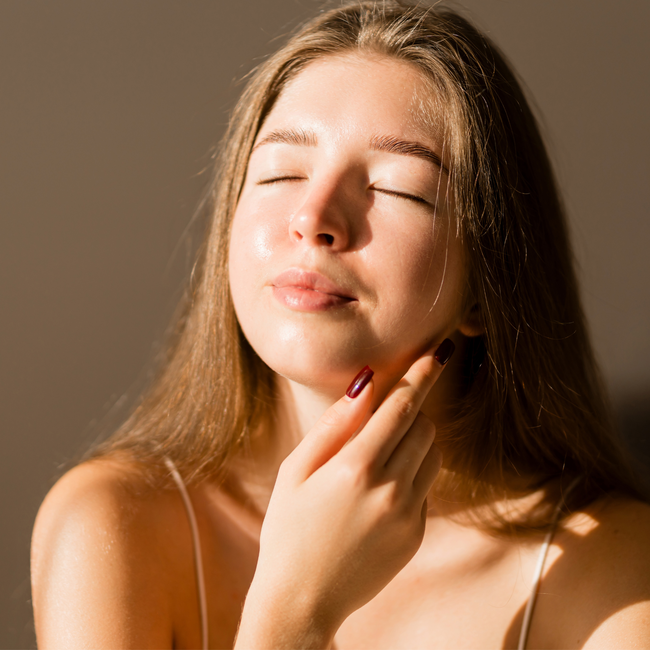Sunless tanning (or self-tanning) has become increasingly popular in recent years, as consumers seek to achieve a natural-looking, sun-kissed glow without the harmful effects of UV exposure, as well as having glowing, bronzed skin out of season or without going on vacation. While self-tanning can be a great way to enhance your complexion and boost your confidence, it's important to follow some best practices to ensure the best results. In this blog, we'll go over some of the top tips for achieving a flawless, long-lasting self-tan.
Prep your skin
Before applying self-tanner, it's essential to prepare your skin properly. This involves exfoliating to remove any dead skin cells, which can cause streaks and unevenness in your tan. Use a gentle exfoliating scrub on your body such as the Volition Turmeric Brightening Polish to slough off any dry, flaky skin. For your face, we recommend a non-abrasive, chemical exfoliator like the Volition ACV Resurfacing Peel Pads. Additionally, make sure that you give yourself 24 hours in advance if you plan to remove body hair before you tan. Self-tanners can sink into loosened pores, creating dark spots and an uneven finish. It's also important to moisturize your skin thoroughly in the days leading up to your self-tan application to ensure an even, smooth base.
Choose the right self-tan formula
Self-tanners come in a variety of formulas, including lotions, mousses, sprays, and drops. Choose the formula that works best for your skin type and desired results. For example, if you have dry skin, a lotion may be a better choice than a spray, which can be drying. If you're new to self-tanning, start with a gradual tanner that allows you to build up your color over time, rather than going for a dark, intense shade right away. A body self-tanner might require a different product to a face self-tanner
Apply evenly
One of the biggest challenges of self-tanning is achieving an even application. To avoid streaks and patches, apply your self-tanner in a circular motion using a tanning mitt or glove. Start at your feet and work your way up, paying special attention to areas that tend to be drier or more prone to streaking, such as your knees, elbows, and ankles. Be sure to blend the tanner thoroughly into your skin, and use a light touch to avoid over-applying in any one area. If you are using your bare hands to apply the product, we suggest applying the self-tanner in sections and washing your hands before moving to a new area to ensure that the tan does not affect your hands.
Allow time to dry
After applying your self-tanner, give it plenty of time to dry before getting dressed or applying any other products to your skin. This can take anywhere from 10 minutes to an hour, depending on the formula and the humidity in your environment. Avoid sweating or wetting your skin during this time, as this can cause streaking or unevenness in your tan.
Maintain your tan
To keep your self-tan looking its best, it's important to maintain it properly. Avoid using harsh soaps or exfoliators that can strip away your color, and opt for gentle, moisturizing products instead. Moisturize your skin daily to keep it soft and supple, and reapply your self-tanner as needed to maintain your desired level of color.
Don’t forget SPF!
A common misconception is that having tan skin protects you from sun exposure. Self-tanner provides a sunless glow, but it does not provide protection against UV rays. Therefore, make sure to apply an SPF product before heading out, and reapply as needed.
In conclusion, self-tanning can be a great way to achieve a healthy, natural-looking glow, but it requires some careful preparation and application to achieve the best results. By following these best practices, you can enjoy a flawless, long-lasting self-tan that enhances your complexion and boosts your confidence.




